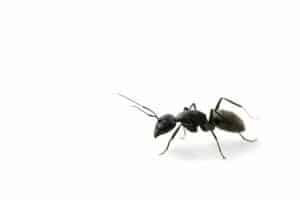Properly venting your bathroom fan is essential to maintain good indoor air quality and prevent moisture-related issues like mold and mildew. In this comprehensive guide, we will explore the best practices for venting a bathroom fan. From understanding the importance of ventilation to step-by-step installation instructions, you’ll find everything you need to know to ensure a healthy and comfortable bathroom environment.
Understanding the Importance of Ventilation
Ventilating your bathroom is not just about eliminating unpleasant odors; it’s also about safeguarding your health and the structural integrity of your home. Without adequate ventilation, the bathroom becomes a breeding ground for mold and mildew, leading to respiratory problems and costly repairs.
The Role of Bathroom Fans
Bathroom fans play a crucial role in maintaining proper ventilation. They remove excess moisture, odors, and contaminants from the air, preventing the buildup of mold and ensuring a pleasant bathroom experience.
Types of Bathroom Fans
 Choosing the right bathroom fan is the first step in effective ventilation. There are several types available, each with its own set of features and installation requirements.
Choosing the right bathroom fan is the first step in effective ventilation. There are several types available, each with its own set of features and installation requirements.
1. Ceiling-Mounted Exhaust Fans
Ceiling-mounted exhaust fans are the most common type. They are installed on the ceiling, typically near the shower or bathtub, and vent the air directly outside through a duct.
2. Wall-Mounted Exhaust Fans
Wall-mounted exhaust fans are suitable for bathrooms without attic access. They are installed on an exterior wall and vent air outside through the wall.
3. Inline Fans
Inline fans are placed in the attic or between the ceiling and roof. They are ideal for bathrooms with long duct runs.
How to Vent a Bathroom Fan
Now that you’ve selected the right bathroom fan for your needs, let’s dive into the steps to vent it effectively.
Choosing the Ventilation Route
Before you start the installation process, decide on the ventilation route. It’s essential to vent the fan air outside and not into the attic, as this can lead to moisture problems. Create a pathway for the exhaust to exit your home.
Installing the Ductwork
Install the ductwork from the fan to the exterior. Use insulated ducts to prevent condensation. Secure the ducts properly, avoiding any kinks or bends that may restrict airflow.
Mounting the Fan
Follow the manufacturer’s instructions to mount the fan securely. Ensure it is level and well-anchored to prevent vibrations and noise.
Wiring the Fan
If you’re not comfortable with electrical work, consider hiring a professional electrician to wire the fan to a switch. Ensure it’s properly grounded for safety.
Testing and Maintenance
After installation, test the fan to ensure it’s working correctly. Regularly clean the fan and ducts to maintain optimal performance.
FAQs
How often should I clean my bathroom fan?
Cleaning your bathroom fan every six months is generally sufficient to maintain its efficiency.
Can I vent my bathroom fan into the attic?
No, venting into the attic can lead to moisture issues and should be avoided.
Do bathroom fans use a lot of electricity?
Most bathroom fans are energy-efficient and consume minimal electricity.
Can I install a bathroom fan myself?
If you have electrical and DIY skills, you can install a bathroom fan. However, hiring a professional is recommended for safety and compliance.
What size bathroom fan do I need?
The fan size depends on your bathroom’s square footage. Generally, a fan should be able to exchange the air in the room at least eight times per hour.
Are there any energy-efficient bathroom fans available?
Yes, many energy-efficient bathroom fans are designed to minimize energy consumption while maintaining effective ventilation.
Conclusion
Properly venting your bathroom fan is crucial for a healthy and comfortable living space. By following the steps outlined in this guide and considering the FAQs, you can ensure your bathroom remains free of moisture-related issues and unpleasant odors. Invest in the right fan, install it correctly, and enjoy a fresh and clean bathroom environment.








